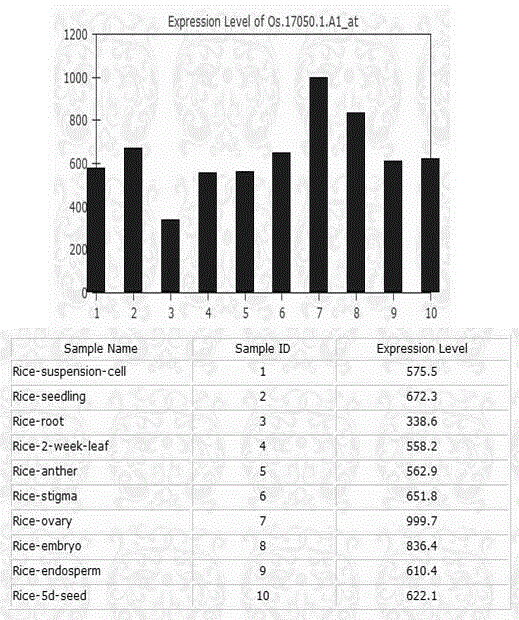Cultivated rice hybrid infertility gene S1 and application thereof
A gene and hybrid technology, which is applied to the interspecific hybrid sterility gene S1 of cultivated rice and its application field, can solve the problems that hinder the research and development of the S1 gene hybrid sterility relationship, and there is no relevant report on the location and sequence of the S1 gene.
- Summary
- Abstract
- Description
- Claims
- Application Information
AI Technical Summary
Problems solved by technology
Method used
Image
Examples
Embodiment 1
[0050] Example 1 Acquisition of near-isogenic lines and construction of mapping populations
[0051] 1. The main test materials are the japonica recurrent parent variety IRAT216 and the near-isogenic line IRAT216S1
[0052] (1) The near-isogenic line IRAT216S1 was bred by crossing japonica IRAT216 with African cultivated rice IRGC102203, and then using IRAT216 as the recurrent parent for more than 9 consecutive backcross generations. There are three types of replacement fragments with different sizes but overlapping, and the genetic characteristics and phenotypes are very similar The near isogenic lines were named IRAT216S1-g1, IRAT216S1-g2, IRAT216S1-g3 respectively, all of which contained a single hybrid sterile S1 locus.
[0053] (2) IRAT216S1-1, IRAT216S1-2, IRAT216S1-3 were backcrossed with the recurrent parent IRAT216 and then selfed, and two BCs were obtained respectively 9 The F2 segregation populations are numbered 1559, 1561; 1563, 1565; 1567, 1569. The groups an...
Embodiment 2
[0054] Example 2 Preliminary Mapping of S1 Gene
[0055] 1. First, scan the short arm of chromosome 6 of the three S1 near-isogenic lines (IRAT216S1-1, IRAT216S1-2, IRAT216S1-3) to find out the overlapping regions of their introgressed chromosome segments, and then use the small The population was subjected to molecular marker linkage analysis and preliminary positioning.
[0056] The specific method is as follows:
[0057] (1) Screening of S1 preliminary localization molecular markers
[0058] According to the preliminary mapping results of previous studies, the regions screened by all the markers for the preliminary mapping of S1 are mainly concentrated in the short arm of chromosome 6. Since the genome sequence of African cultivated rice has not been determined, we can only use the SSR and INDEL molecular markers between indica rice (9311) and japonica rice (Nipponbare) published on the Internet (http: / / www.gramene.org). Design a pair of molecular marker primers at int...
Embodiment 3
[0072] Example 3 S1 Gene fine mapping
[0073] This example is in S1 On the basis of the preliminary mapping of the gene, the molecular markers of the large population are used to fine-map it.
[0074] 1. Development and linkage analysis of new polymorphic molecular markers
[0075] With the continuous shrinkage of the positioning section in Example 2, it becomes more and more difficult to find the molecular markers used for further fine positioning. In the 95kb interval between RM3463 and RM19359, the present invention synthesized and detected all the SSR markers published on the Internet, but unfortunately there is no one-to-one polymorphism.
[0076]Therefore, based on the sequence alignment of the indica rice 9311 and the japonica rice Nipponbare, the inventors synthesized and detected more than a dozen pairs of INDEL markers (some of which are shown in Table 4) with differences between the two sequences segment by segment, and the result was only 2180 A pair of mark...
PUM
 Login to View More
Login to View More Abstract
Description
Claims
Application Information
 Login to View More
Login to View More - R&D Engineer
- R&D Manager
- IP Professional
- Industry Leading Data Capabilities
- Powerful AI technology
- Patent DNA Extraction
Browse by: Latest US Patents, China's latest patents, Technical Efficacy Thesaurus, Application Domain, Technology Topic, Popular Technical Reports.
© 2024 PatSnap. All rights reserved.Legal|Privacy policy|Modern Slavery Act Transparency Statement|Sitemap|About US| Contact US: help@patsnap.com










